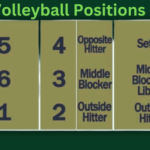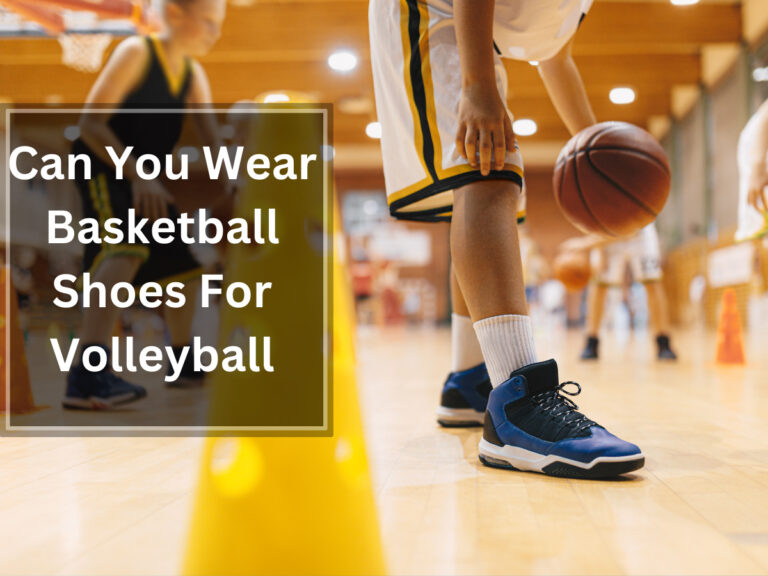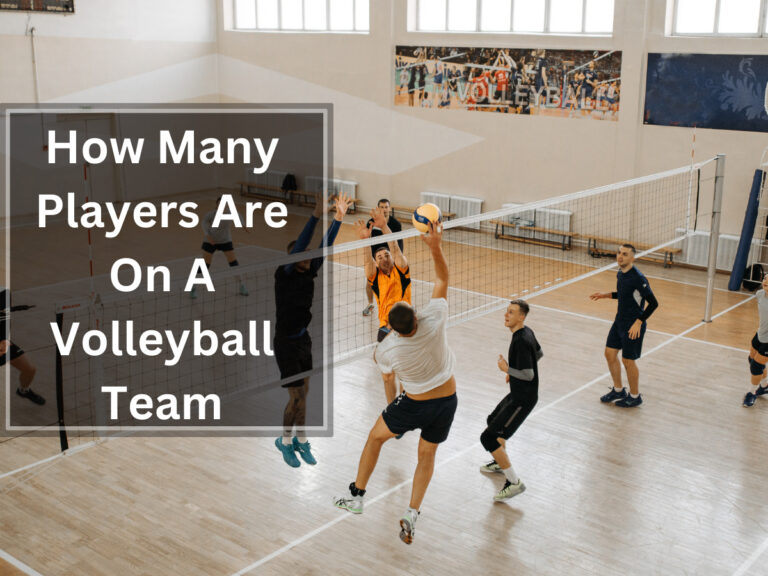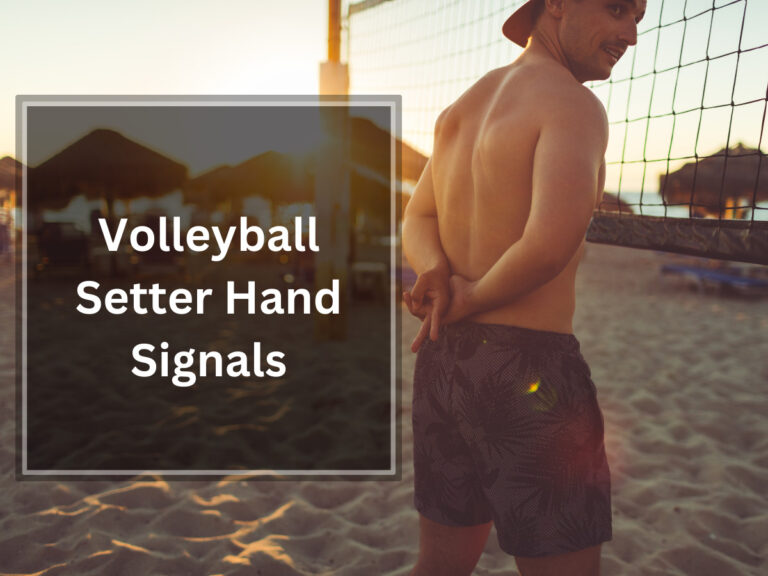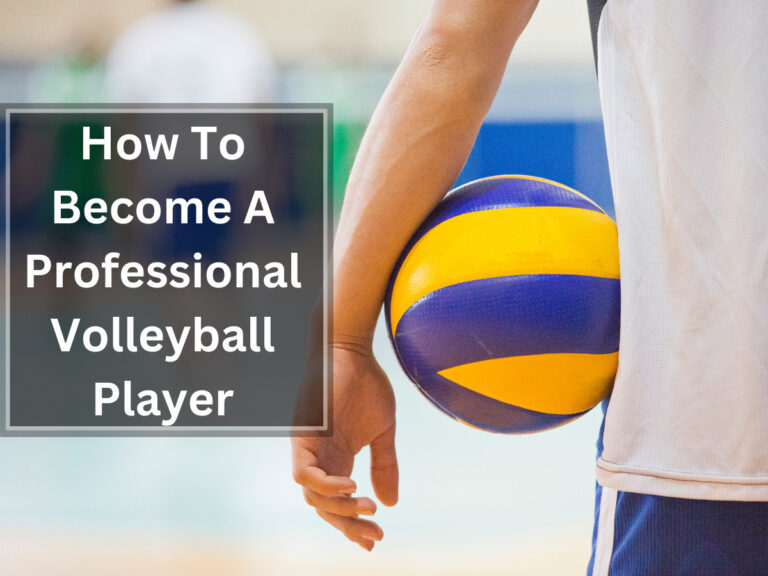How To Block In Volleyball – A Beginners Guide
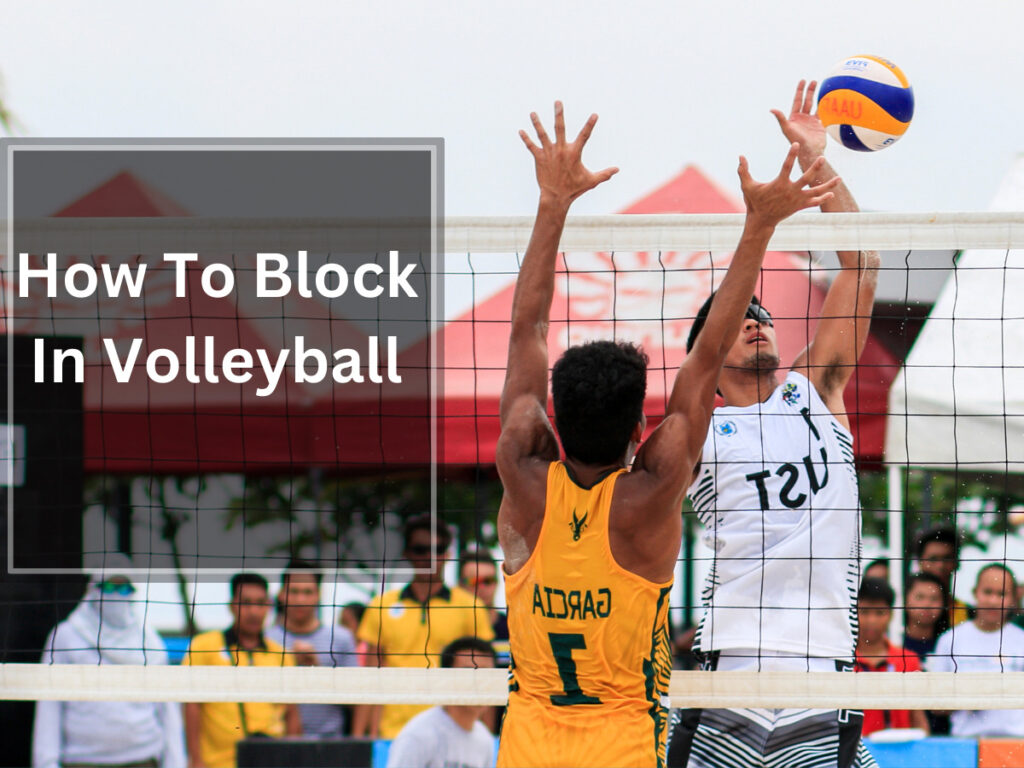
I’ve been playing volleyball for years, and let me tell you, blocking is one of the most essential skills on the court. It’s not just about getting your hands up and hoping for the best. No, it’s a strategic art form that can disrupt opposing teams and give your defense a huge advantage.
In this article, I’m going to share with you all the secrets to becoming an expert blocker.
We’ll start by diving into the fundamentals of blocking, including footwork and positioning. Then, we’ll move on to developing proper hand and arm technique to ensure maximum effectiveness. But it doesn’t stop there – we’ll also learn how to read hitters and anticipate their plays, as well as communicate seamlessly with our teammates.
Timing is crucial in blocking, so we’ll discuss how to time your jumps perfectly and adjust to different types of attacks. And of course, no skill is perfected without practice, so I’ll provide you with some drills and exercises that will take your blocking game to new heights.
Get ready to elevate your volleyball skills and become a force at the net – let’s dive into the world of blocking!
Understanding the Fundamentals of Blocking
Want to know how to block in volleyball? Let’s dive into the fundamentals and enhance your blocking skills! As a seasoned player, I understand the importance of mastering the basics.
One key aspect is footwork drills, which help improve agility and positioning at the net. By practicing different footwork patterns, such as cross-steps or shuffle steps, you can quickly react to the hitter’s approach and get into a solid blocking position.
Effective communication strategies are also crucial for successful blocking. Clear and concise communication with your teammates ensures everyone knows their assignments and can execute coordinated blocks. This helps create a wall-like defense that is difficult for opponents to penetrate.
Timing techniques are another vital component of effective blocking. Timing your jump correctly allows you to reach over the net at the peak of the hitter’s attack, maximizing your chances of getting touches on the ball or even scoring blocks. Practice timing drills that focus on reading hitters’ movements and anticipating their attacks.
By honing these fundamental skills through footwork drills, communication strategies, and timing techniques, you’ll become a formidable blocker on the court.
Mastering Footwork and Positioning
To improve your mastery of footwork and positioning, it is important to focus on two key aspects: analyzing your opponent’s tendencies and utilizing the correct footwork techniques.
To excel in blocking, it is essential to analyze your opponent’s tendencies, allowing you to anticipate their hitting patterns and make smart defensive decisions. By studying their previous shots and observing their body language, you can gain valuable insights into their preferred attacking strategies. This knowledge will enable you to position yourself in the optimal spot on the court to effectively defend against incoming attacks.
Utilizing the correct footwork is crucial for successful blocks. Focus on explosive lateral movements and quick adjustments to get into position quickly. By practicing these footwork techniques, you can ensure that you are always in the right place at the right time to make impactful defensive plays.
Positioning yourself for success involves being aware of your surroundings, understanding the flow of the game, and strategically placing yourself where you can have the greatest impact on defense. By constantly monitoring the movements of both your teammates and opponents, you can adjust your positioning accordingly. This will allow you to effectively cover the court and be ready to react to any attacking opportunities.
By continuously honing your footwork skills and positioning yourself intelligently, you’ll be able to consistently disrupt opposing attacks and contribute significantly to your team’s success at the net. So, make sure to dedicate time and effort to mastering footwork and positioning, as it is a crucial aspect of becoming a top-notch defensive player.
Developing Proper Hand and Arm Technique
Mastering proper hand and arm technique is crucial for effectively defending against incoming attacks at the net. This allows you to consistently disrupt your opponents’ hitting patterns and make impactful defensive plays that contribute to your team’s success.
Did you know that a study found that skilled blockers were able to successfully penetrate the net 80% of the time, resulting in more blocked balls and increased defensive effectiveness?
Developing hand placement, arm extension, and proper hand positioning are essential components of mastering this technique.
When it comes to hand placement, aim to position your hands slightly above the net with fingers spread wide. This allows for maximum coverage and increases the chances of deflecting the ball back into the opponent’s court.
Additionally, focus on extending your arms fully and reaching over the net during a block. This ensures that you create a solid barrier for attackers to hit through.
Proper hand positioning involves aligning your hands in relation to the hitter’s approach angle. By adjusting your hand position accordingly, you can better anticipate where the ball will be attacked and increase your chances of making successful blocks.
Remember, developing proper hand and arm technique takes practice and repetition. By consistently working on these skills, you’ll become a formidable blocker who can effectively defend against any attacking strategy thrown your way.
Reading the Hitter and Anticipating the Play
As I watch the hitter’s approach, my eyes track their movements, scanning for any subtle cues that may hint at the direction and type of attack they are about to unleash. Anticipating hitters is a crucial skill in blocking. It allows me to adjust my defensive positioning and make split-second decisions on how to position myself at the net.
By reading the hitter effectively, I can disrupt their decision-making process and force them into making errors or hitting right into my block. This requires a keen understanding of the opponent’s tendencies and a constant awareness of their body language during their approach.
Mastering the art of anticipating hitters is essential to becoming an effective blocker who consistently shuts down opposing attacks.
Communicating and Collaborating with Your Teammates
Working together with your teammates, you can effectively communicate and collaborate to form a synchronized defensive wall at the net. Strategies for effective communication are crucial in coordinating block movements and ensuring that everyone is on the same page.
Clear and concise verbal cues, such as calling out ‘left’ or ‘right,’ can help direct your teammates to their assigned blocking positions. Non-verbal communication, such as hand signals or eye contact, can also be utilized to quickly convey information during fast-paced plays.
In addition to communication, team tactics and strategies play a vital role in successful blocking. It’s important to discuss and plan ahead with your teammates on how to handle specific offensive plays from the opposing team. This includes identifying potential hitters, determining who will take the line or angle responsibility, and executing specific blocking techniques based on scouting reports.
By working together as a cohesive unit and implementing effective communication strategies, you can enhance your ability to anticipate plays, coordinate block movements, and execute successful blocks at the net. This sense of teamwork not only strengthens your defensive capabilities but also fosters a sense of belonging within the team dynamic.
Utilizing Timing and Timing Your Jumps
Utilizing precise timing and expertly timing your jumps allows you to maximize your defensive efforts at the net. This ensures that you can effectively disrupt opposing attacks and execute successful blocks.
Timing and coordination are key factors in blocking strategies. They determine when to jump and how to position yourself defensively. By studying the opposing team’s hitters and their approach angles, you can anticipate their attacks and time your jump accordingly.
This allows you to meet the ball at its peak and position your hands in a way that will effectively block or deflect it back into the opponent’s court.
Additionally, proper defensive positioning is crucial for successful blocking. By being in the right place at the right time, you can take away hitting options for attackers and force them into unfavorable situations.
Mastering timing and coordination in blocking will greatly enhance your defensive performance at the net.
Adjusting to Different Types of Attacks
When facing various offensive strategies, it’s essential to adapt your defensive approach and make the necessary adjustments to effectively counter different types of attacks.
Adjusting to quick attacks requires quick reflexes and anticipation. As a blocker, I need to be ready to jump and penetrate the net at the right moment, timing my jump to meet the hitter’s contact point.
Countering off speed shots is equally important. I must recognize when the attacker is going for a softer shot and adjust my blocking technique accordingly, focusing on sealing the net and extending my arms to disrupt their timing.
Additionally, defending against angled hits requires me to read the hitter’s approach angle and adjust my positioning accordingly, ensuring that I am in the best position possible to block or deflect their attack.
Adapting to these different types of attacks will help me become a more versatile and effective blocker on the court.
Practicing Drills and Exercises for Blockers
Practicing drills and exercises helps me hone my skills as a blocker and become more effective at countering opposing attacks. One crucial aspect of blocking is timing, and by consistently practicing timing drills, I can improve my ability to jump and penetrate the net at the right moment. This allows me to effectively disrupt the hitter’s attack and increase the chances of a successful block.
Analyzing opponents is another essential part of becoming a skilled blocker. By studying their tendencies and observing their hitting patterns, I can anticipate where they are likely to attack from. This knowledge enables me to position myself correctly and react quickly, improving my reaction time when it comes to blocking.
Additionally, incorporating reaction time exercises into my training regimen helps me develop quick reflexes necessary for successful blocks. These drills focus on reacting instantly to different stimuli or cues, such as visual or auditory signals. By regularly practicing these exercises, I can sharpen my reactions and make split-second decisions during live game situations.
Overall, consistent practice of timing drills, analyzing opponents’ tendencies, and improving reaction time through specific exercises all contribute to becoming a more effective blocker on the volleyball court.
Frequently Asked Questions
What are some common mistakes to avoid when blocking in volleyball?
Mistimed jumps, incorrect hand positioning, and poor footwork are common mistakes to avoid when blocking in volleyball. These errors can lead to missed blocks and ineffective defense. It’s important to focus on timing, technique, and proper positioning to maximize success at the net.
How can blockers effectively defend against quick sets?
To effectively defend against quick sets, I focus on footwork techniques to quickly move into position. Timing drills help me anticipate the setter’s actions, while reading their hands allows me to react and block effectively.
What are some strategies for blocking against hitters who like to hit around the block?
When facing hitters who like to hit around the block, one effective blocking strategy is to use footwork techniques and timing to position yourself closer to the hitter’s angle of attack. By closing off their preferred hitting options, you can increase your chances of making a successful block.
How can blockers improve their reaction time and anticipation skills?
To improve reaction time and anticipation skills, I recommend incorporating specific training techniques such as reaction drills, video analysis, and studying opponent tendencies. By consistently practicing these methods, blockers can enhance their ability to anticipate and react effectively during a volleyball match.
What are some tips for effective communication and collaboration with teammates during blocking?
To effectively communicate and collaborate with teammates during blocking, it’s important to establish clear signals and calls. Timing, positioning, and hand placement should be adjusted based on the opponent’s hitters and offensive patterns.



